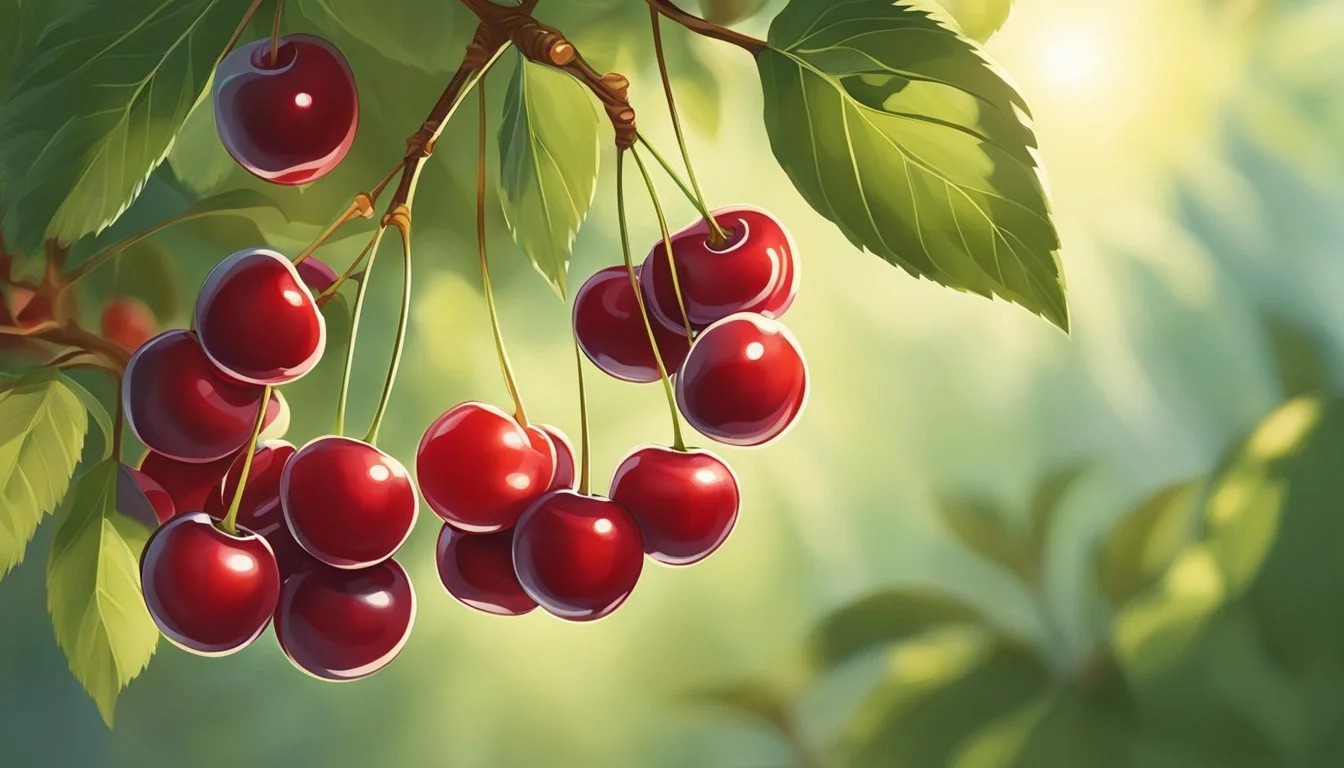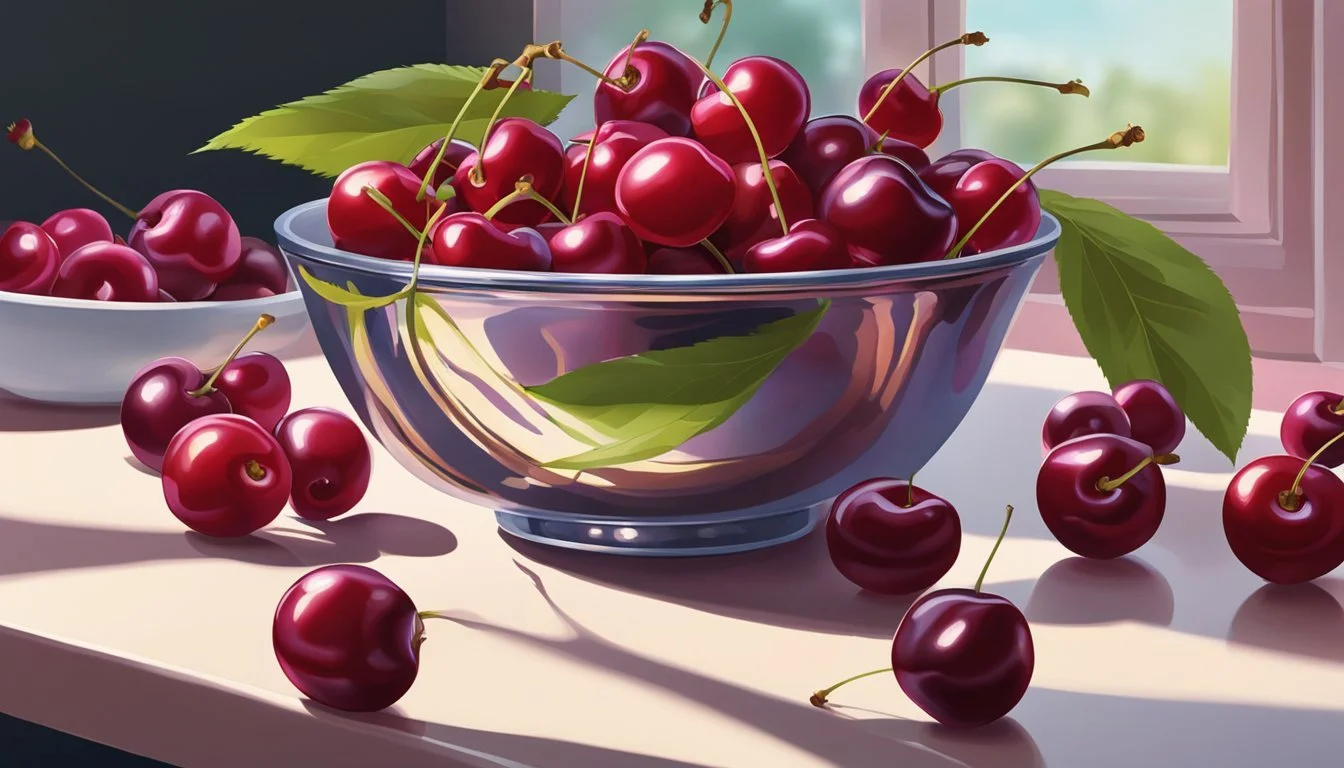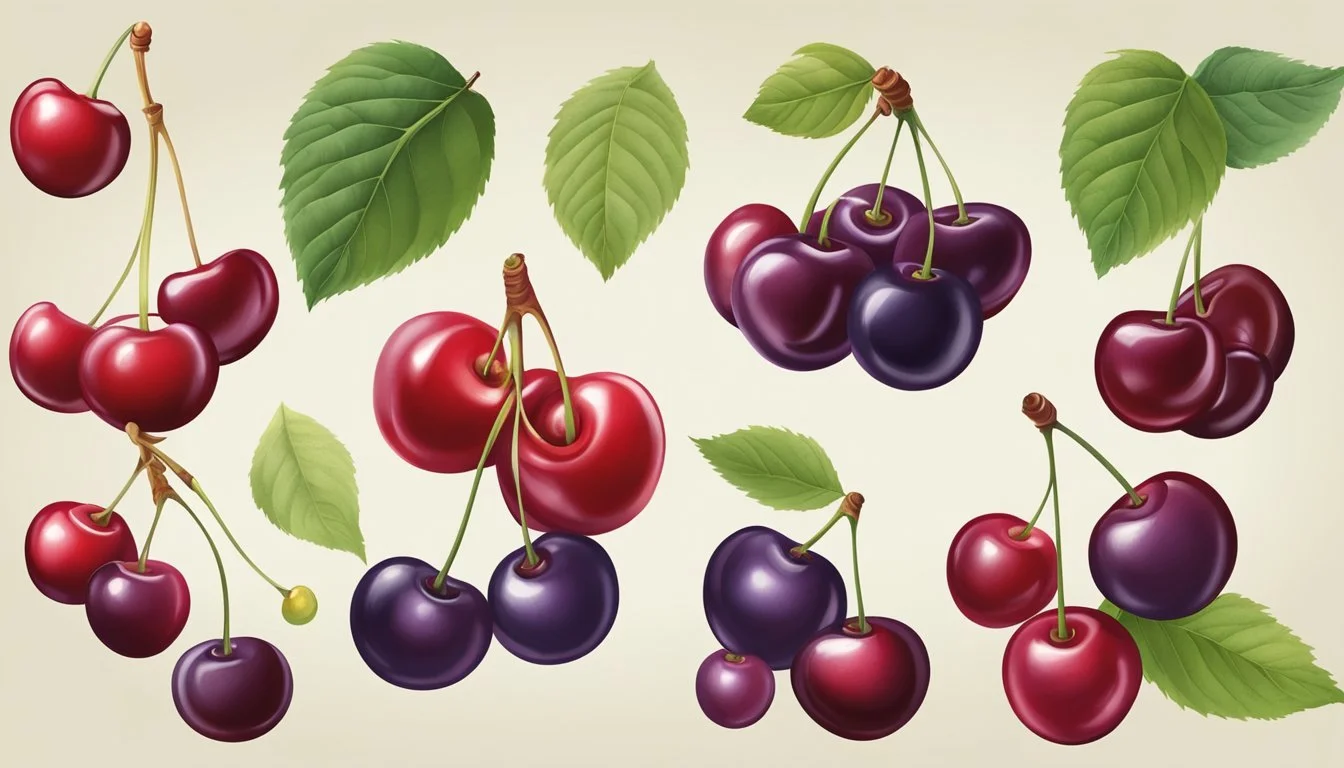How to Tell If Cherries Are Ripe
The Ultimate Ripeness Indicators
Determining the ripeness of cherries is essential for both connoisseurs and casual consumers looking for the sweetest, juiciest experience. Cherries, unlike some fruits, do not ripen after being picked, so selecting the ripest fruit at purchase is key for optimum flavor. From the produce aisle to the home orchard, knowing what to look for in ripe cherries can greatly enhance the fruit’s taste and longevity.
Color and texture are reliable indicators of cherry ripeness. Ripe cherries generally display a rich, uniform color that varies from yellow and red blushes in Rainier cherries to deep, ruby reds in Bing cherries. The skin should be glossy and free from blemishes, while the flesh should yield slightly to pressure, indicating juiciness but still retaining firmness. A good test for ripeness is the taste; the fruit should be sweet with a slight tang, which is characteristic of a cherry at its peak ripeness.
Key Takeaways
Cherries must be ripe when picked to ensure the best flavor, as they do not ripen post-harvest.
Look for a consistent, deep color and glossy skin to indicate a cherry is ripe and ready to eat.
Firmness and flavor are the final checks for ripeness; the fruit should be plump with a balance of sweetness and acidity.
Identifying Ripe Cherries
The perfect cherry is ripe with flavor and offers an optimal texture. Recognizing ripeness involves assessing visual cues, texture, and understanding specific varieties.
Visual Cues of Ripeness
Ripe cherries display a range of color changes, specific to their variety. Sweet cherries, such as Bing, exhibit a deep red to almost black hue. On the other hand, tart cherries are ready for picking when they reach a bright red color. The skin of ripe cherries should appear glossy, plump, and without blemishes.
Bing Cherries: Deep, rich red to dark purple or black.
Rainier Cherries: Golden yellow with a pink to red blush.
Texture and Firmness
The feel of a cherry is indicative of its ripeness. A ripe cherry should be firm but not hard, with a slight give when gently squeezed. This firmness ensures the fruit is at its peak for both sweetness and juiciness.
Sweet Cherries: Firm to the touch with a slight give.
Tart Cherries: Similar in firmness to sweet cherries, with a bit more softness.
Cherry Varieties and Their Ripeness Indicators
Each cherry variety may present unique indicators of ripeness:
Sweet Cherries: Look for a deep color and firmness; stems should be fresh and green.
Tart Cherries: Typically a strong, bright red and slightly softer than sweet varieties.
Bing Cherries: Dark, almost black skin, signifies optimal ripeness.
Rainier Cherries: Harvest when they have a yellow background with a red blush.
By observing these characteristics, one can accurately assess the ripeness of cherries across distinct varieties.
Optimal Picking and Purchase Tips
Knowing when and how to pick cherries at their ripest, along with selecting the best ones at the market, ensures one enjoys the fruit at its peak flavor and texture.
Best Time for Picking Cherries
Cherries reach peak ripeness in the late spring to mid-summer, depending on their variety and the region's climate. While a cherry's color—a deep red for sweet varieties and a bright red for tart ones—is a strong indicator of ripeness, one must also consider the fruit's firmness and attachment to the stem. Ripe cherries are plump with a firm texture that yields slightly under pressure, and they should come off the stem with a gentle twist, indicating they are ready to be harvested.
Selecting Cherries at the Market
When purchasing cherries at the market, one should evaluate:
Color: Look for uniform, deep red to black hues in sweet cherries, or bright red for tart varieties.
Plumpness: The cherries should be full and plump, not shriveled or soft.
Stems: Fresh, green stems are a sign of recently picked, quality cherries.
Firmness: They should be firm to the touch with just a slight give when applying gentle pressure.
Avoid cherries with brown spots or those that are overly soft, as these are past their peak and may not provide the best eating experience.
Ripening Cherries After Purchase
Once cherries are picked, they cease to become sweeter as they do not ripen in the traditional sense. They can, however, soften and appear more ripe when stored correctly after purchase.
Using Ethylene Gas
Ethylene gas is a natural plant hormone that can induce ripening in certain fruits. While cherries typically do not continue to develop sugar after being harvested, they can respond to ethylene by softening slightly. To attempt ethylene-induced ripening at home, one could place cherries in a sealed paper bag with a ripe banana or apple, as these fruits release ethylene gas naturally.
Steps for Ethylene Gas Ripening:
Place cherries in a paper bag.
Add an ethylene-producing fruit like a banana or apple.
Seal the bag and store at room temperature.
Check daily for softness.
Temperature and Environment Control
Controlling the temperature and environment is crucial for maintaining the cherries in a state that may resemble ripening. Cherries should be kept at room temperature if they are slightly under-ripe to encourage softening. However, prolonged exposure to high temperatures or direct sunlight can lead to spoilage rather than desirable softening.
Ideal Conditions for Cherry Softening:
Store at room temperature if not fully ripe.
Avoid direct sunlight and high heat.
Refrigerate once desired softness is achieved to preserve freshness.
Preserving Freshness and Extending Shelf Life
To maintain the freshness of cherries and extend their shelf life, consumers should focus on proper storage methods and strategies to prevent mold and spoilage. The key is to create an environment that slows down decay and preserves quality.
Proper Storage Methods
The best way to store cherries is by keeping them in the refrigerator soon after purchase. They should be stored in a plastic bag or a container that allows for a bit of air circulation. The optimal temperature range is between 32°F (0°C) and 34°F (1°C). It is crucial to avoid washing cherries before storing, as excess moisture can lead to spoilage. Instead, they should be washed just before consumption.
Refrigerator Storage
Temperature: 32°F to 34°F
Container: Plastic bag with air holes or container
Wash: Only prior to eating
Preventing Spoilage and Mold
Cherries are susceptible to mold and spoilage if not stored correctly. One must regularly inspect the cherries, removing any with signs of spoilage, such as mold or soft spots, which can rapidly spread to healthy fruits. For those who wish to absorb any additional moisture, placing cherries in a brown paper bag within the refrigerator can be beneficial. Furthermore, retaining the stems can help prevent the introduction of mold at the site of detachment.
Regular Checks
Remove: Spoiled or moldy cherries immediately
Moisture Control
Store in: Brown paper bag inside the fridge
Stems: Keep them on to reduce mold entry points
Taste Testing and Consuming Cherries
When determining the ripeness and quality of cherries through taste testing, one should focus on the sweetness and juiciness of the fruit. For cherry enthusiasts, the joy of eating cherries goes beyond just tasting, encompassing the full sensory experience.
Conducting a Taste Test
A taste test is a reliable method for assessing the ripeness of cherries. One should look for a balance of sweetness and a burst of natural flavor that indicates a high sugar content. Here's a simple guideline they can follow:
Observe: Examine the cherry's color and firmness.
Smell: Check for a slightly sweet aroma.
Taste: Sample a cherry to assess its sweetness and juiciness.
The peak ripeness is characterized by a pronounced sweetness and a juicy texture that should be refreshing and satisfying.
Cherry Enthusiast's Guide to Enjoying Cherries
Cherry enthusiasts appreciate cherries not only for their taste but also for the overall experience of consumption. They typically advise on the following points:
Optimal Serving: Chilled cherries often provide the best taste experience.
Pairing: Ripe sweet cherries pair well with a variety of cheeses and wines that complement their sweetness.
Storage: To retain the ripe taste, cherries should be stored in the refrigerator and consumed within a few days of purchase.
By adhering to these guidelines, one ensures the highest pleasure from tasting and consuming these ripe fruits.
Understanding Cherry Varieties
Cherries come in numerous varieties, each with its own set of characteristics. Recognizing the differences between sweet and tart cherries is essential, as is understanding the relationship between cherry varieties and their preferred climates.
Sweet versus Tart Varieties
Sweet cherries are often consumed fresh due to their sugary flavor profile. Bing cherries, a popular sweet variety, are recognized by their deep red color and large size. Another well-known sweet type is the Rainier cherry, which displays a distinctive golden yellow hue with a red blush.
In contrast, tart cherries, also known as sour cherries, are typically used in cooking and baking. They have a sharper flavor and are usually smaller with a bright red color. Tart cherries are hardier than sweet varieties and can endure colder temperatures.
Cherry Trees by Climate and Region
Sweet cherries thrive in temperate climates, preferably with dry summers and mild winters. They are popular in regions like the Pacific Northwest and parts of California in the United States. Rainier cherries, for example, originated in Washington State and favor such conditions.
Tart cherries are more adaptable to a range of climates, tolerating colder weather and thriving in the Midwest and Northeastern United States. Due to their resilience, they are a robust choice for growers in areas with more variable weather patterns.
Issues and Considerations
Selecting cherries at ideal ripeness is crucial for ensuring the best flavor and texture. This section will discuss how to manage cherries that are not at the perfect stage of ripeness and how to identify common issues affecting cherry quality.
Dealing with Unripe and Overripe Cherries
Unripe cherries are often identified by their firmness and lack of natural sugars, which means they are less sweet and may have a tart flavor. These cherries have a bright, shiny skin but lack the plumpness expected from ripe ones. On the other hand, overripe cherries can present a mushy feel and are more susceptible to damage. Their stems may appear brown and shriveled – an indication of being past their prime.
Unripe Cherries: Not sweet, very firm, bright skin.
Overripe Cherries: Mushy, damaged, brown stems.
It's important to note that cherries do not continue to ripen significantly after they are picked, so selecting them at the right time is key.
Addressing Common Cherry Problems
Cherries can suffer from various issues, including damage and disease, which can affect their quality. Damage to the cherries might manifest as bruising, cuts, or insect bites. These factors can make the fruit unappealing and potentially speed up the spoilage process. Disease can also be a concern, with symptoms like spots on the skin indicating potential problems. A disease can compromise the cherry's structure and taste or make it unsafe to eat.
Damage Checklist:
Bruising: Indicates mishandling or overripeness.
Cuts/Bites: Susceptibility to further decay or infestation.
Smooth Skin: A sign of a disease-free cherry.
Cherries should be plump and yield slightly to pressure, signaling ideal ripeness. Any deviation from this indicates either underripe or overripe conditions, and one should carefully inspect for visible signs of damage or disease.






